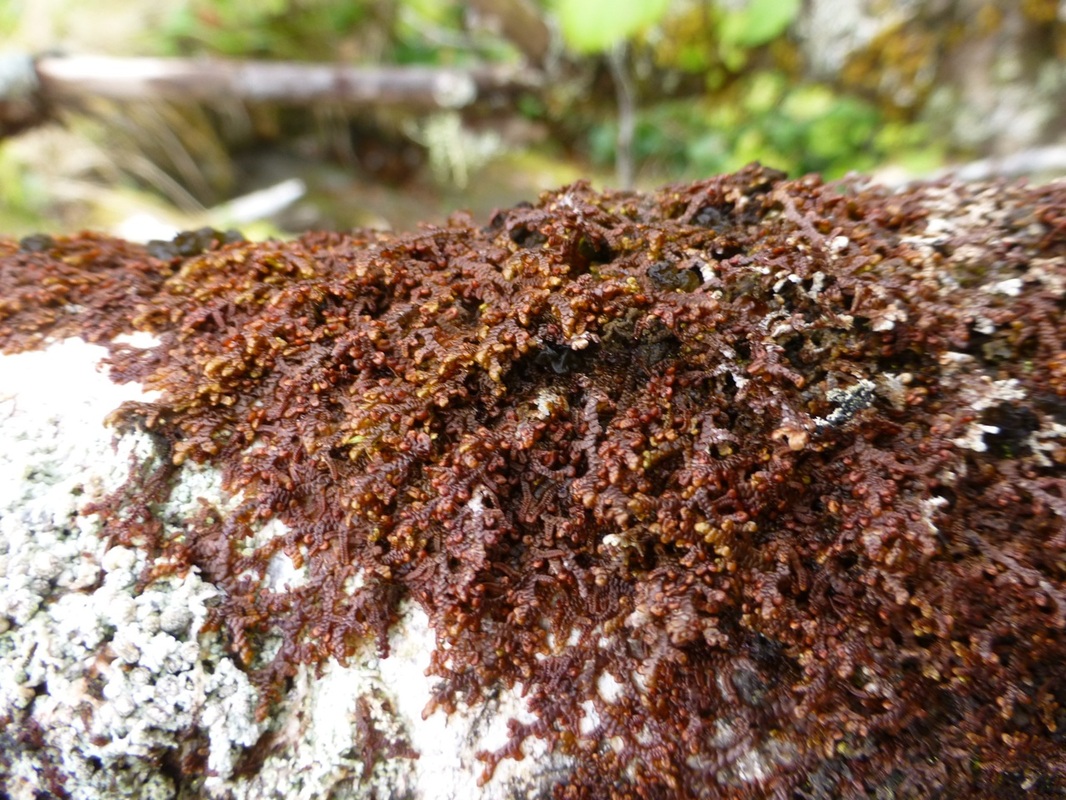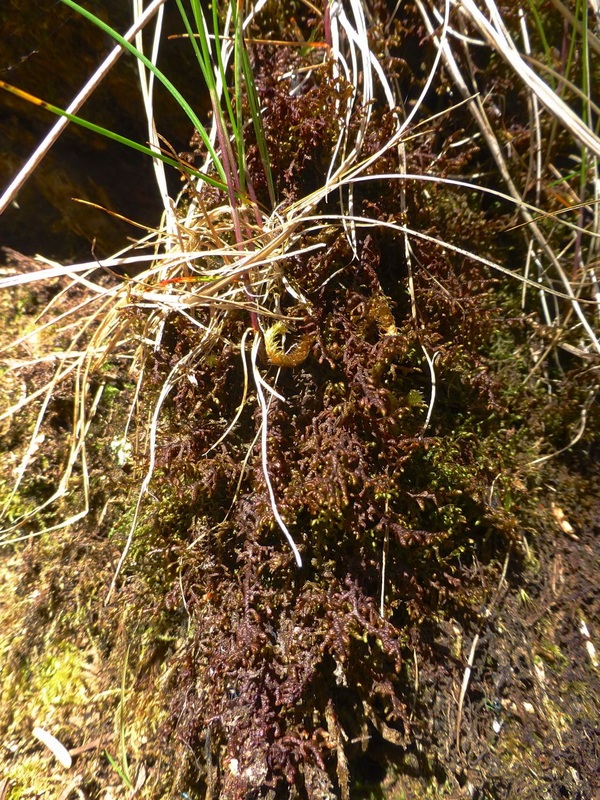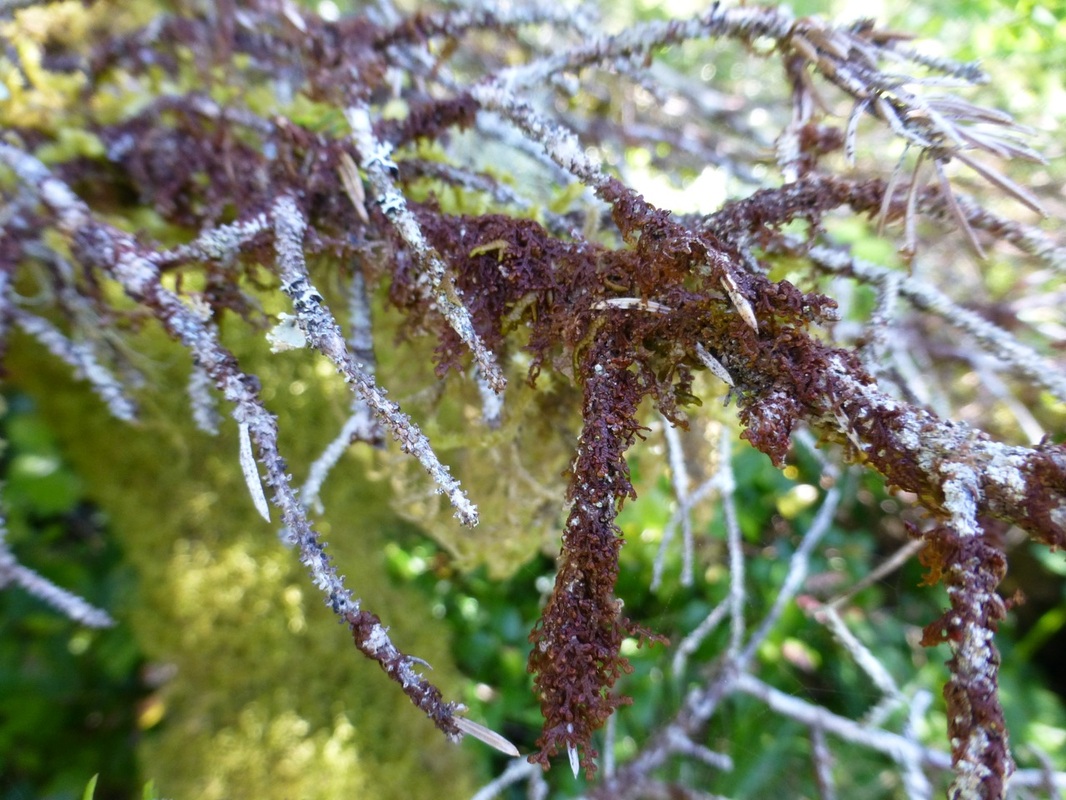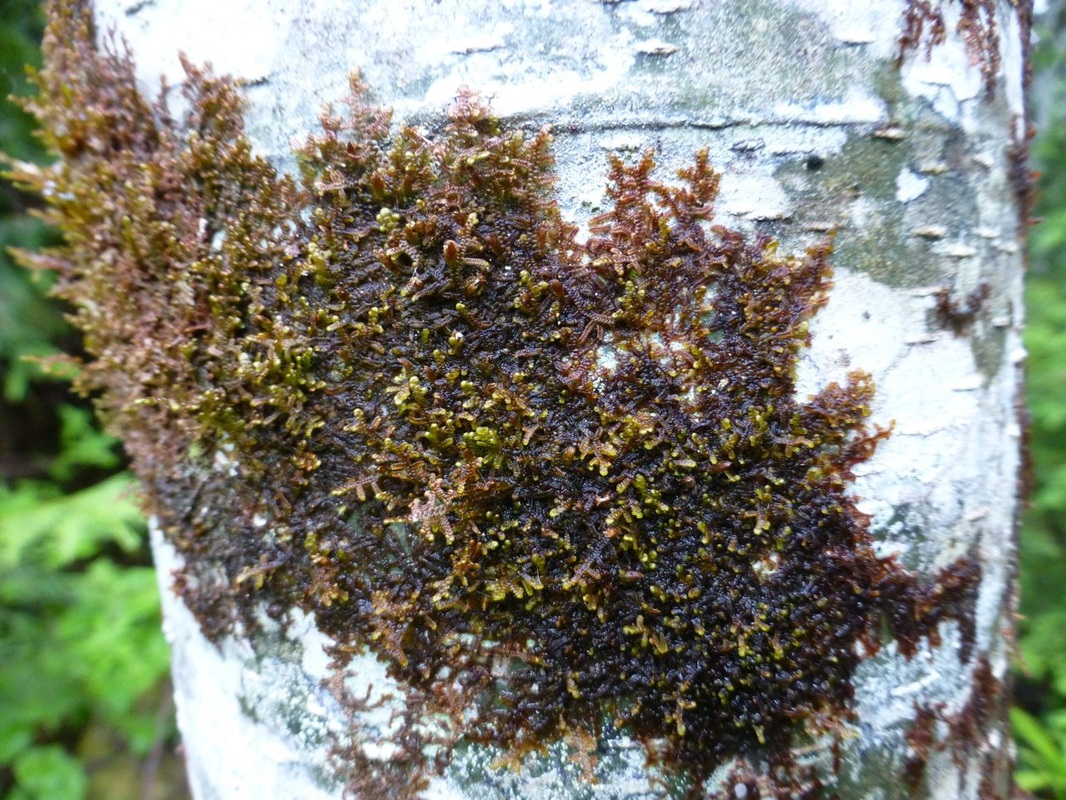Hanging millipede liverwort • Frullania tamarisci ssp. nisquallensis
Identification
Hanging millipede liverwort is reddish-brown or reddish-black with pinnate branching and overlapping, shingle-like leaves. The upper leaves are composed of two lobes folded against each other; the under-lobes are smaller and helmet-shaped, and curved against the upper lobe. Click here for a diagram of hanging millipede liverwort leaf structure.
Habitat & Range
Hanging millipede liverwort grows pressed closely against tree trunks and branches; it may also hang from branches in mats. It commonly grows on alder and maple trees, though it may also be found on conifers. It also grows on cliff faces and rock faces. It is the most common small liverwort along the BC coast.
Intriguing Info
Skin contact with this liverwort may cause dermatitis; for this reason it has been dubbed "woodsman's eczema."
Hanging millipede liverwort is reddish-brown or reddish-black with pinnate branching and overlapping, shingle-like leaves. The upper leaves are composed of two lobes folded against each other; the under-lobes are smaller and helmet-shaped, and curved against the upper lobe. Click here for a diagram of hanging millipede liverwort leaf structure.
Habitat & Range
Hanging millipede liverwort grows pressed closely against tree trunks and branches; it may also hang from branches in mats. It commonly grows on alder and maple trees, though it may also be found on conifers. It also grows on cliff faces and rock faces. It is the most common small liverwort along the BC coast.
Intriguing Info
Skin contact with this liverwort may cause dermatitis; for this reason it has been dubbed "woodsman's eczema."
References
Ellis,S. Frullania nisquallensis. Introduction to Bryophytes. Biology 321, Department of Biology, University of British Columbia, Vancouver. Accessed
Hodgetts, N. Frullania tamarisci Tamarisk Scalewort. British Bryological Society. Accessed 06/01/2014.
Pojar, J. and MacKinnon, A. (1994). Plants of Coastal British Columbia. Vancouver, BC: Lone Pine Publishing. P. 444.
Authors and editors of page
Kelly Fretwell, Ian Cruickshank, and Brian Starzomski (2015).
Ellis,S. Frullania nisquallensis. Introduction to Bryophytes. Biology 321, Department of Biology, University of British Columbia, Vancouver. Accessed
Hodgetts, N. Frullania tamarisci Tamarisk Scalewort. British Bryological Society. Accessed 06/01/2014.
Pojar, J. and MacKinnon, A. (1994). Plants of Coastal British Columbia. Vancouver, BC: Lone Pine Publishing. P. 444.
Authors and editors of page
Kelly Fretwell, Ian Cruickshank, and Brian Starzomski (2015).







